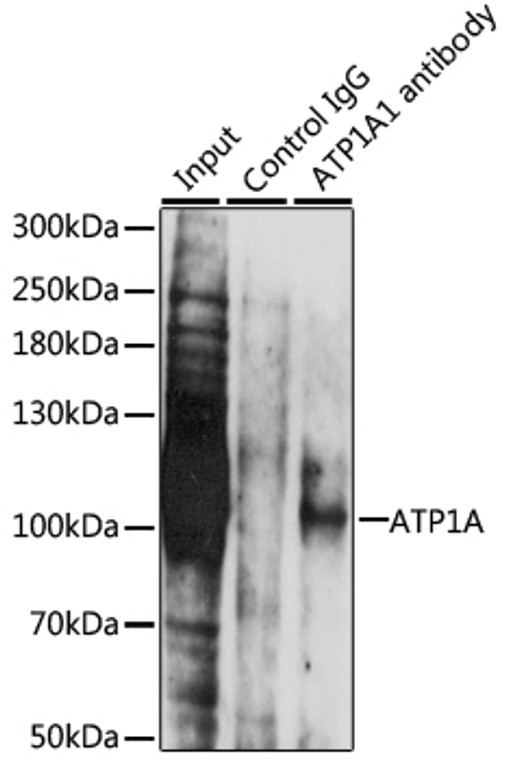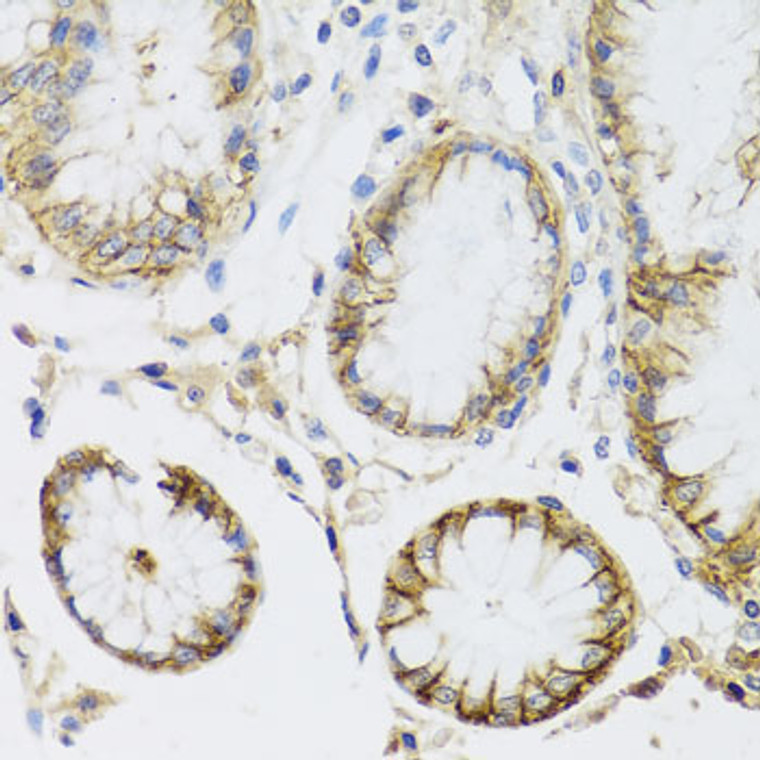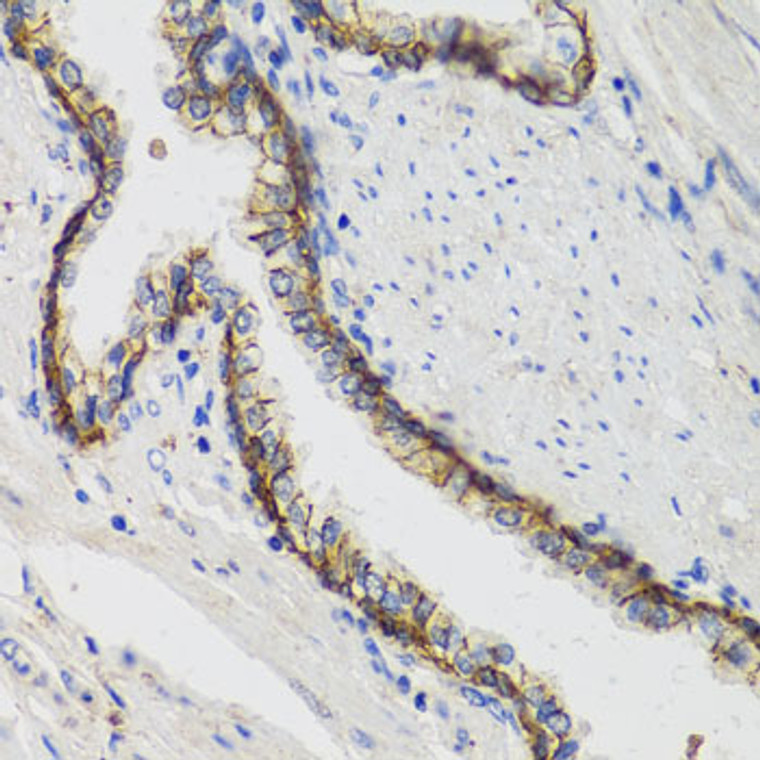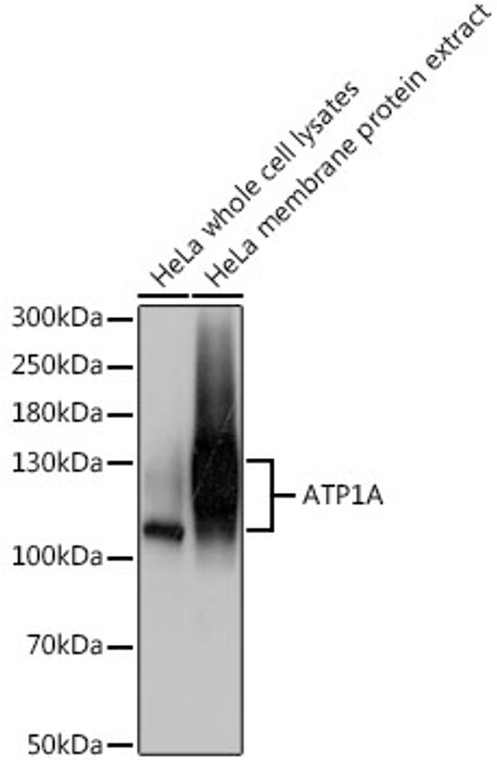| Host: |
Rabbit |
| Applications: |
WB/IHC/IP |
| Reactivity: |
Human/Mouse |
| Note: |
STRICTLY FOR FURTHER SCIENTIFIC RESEARCH USE ONLY (RUO). MUST NOT TO BE USED IN DIAGNOSTIC OR THERAPEUTIC APPLICATIONS. |
| Short Description: |
Rabbit polyclonal antibody anti-ATP1A (551-850) is suitable for use in Western Blot, Immunohistochemistry and Immunoprecipitation research applications. |
| Clonality: |
Polyclonal |
| Conjugation: |
Unconjugated |
| Isotype: |
IgG |
| Formulation: |
PBS with 0.02% Sodium Azide, 50% Glycerol, pH7.3. |
| Purification: |
Affinity purification |
| Dilution Range: |
WB 1:500-1:1000IHC-P 1:50-1:200IP 1:50-1:100 |
| Storage Instruction: |
Store at-20°C for up to 1 year from the date of receipt, and avoid repeat freeze-thaw cycles. |
| Gene Symbol: |
ATP1A1 |
| Gene ID: |
476 |
| Uniprot ID: |
AT1A1_HUMAN |
| Immunogen Region: |
551-850 |
| Immunogen: |
Recombinant fusion protein containing a sequence corresponding to amino acids 551-850 of human ATP1A (NP_000692.2). |
| Immunogen Sequence: |
RVLGFCHLFLPDEQFPEGFQ FDTDDVNFPIDNLCFVGLIS MIDPPRAAVPDAVGKCRSAG IKVIMVTGDHPITAKAIAKG VGIISEGNETVEDIAARLNI PVSQVNPRDAKACVVHGSDL KDMTSEQLDDILKYHTEIVF ARTSPQQKLIIVEGCQRQGA IVAVTGDGVNDSPALKKADI GVAMGIAGSDVSKQAADMIL LDDNFASIVTGVEEGRLIFD NLKKSIAYTLTSNIPEITP |
| Post Translational Modifications | Phosphorylation on Tyr-10 modulates pumping activity. Phosphorylation of Ser-943 by PKA modulates the response of ATP1A1 to PKC. Dephosphorylation by protein phosphatase 2A (PP2A) following increases in intracellular sodium, leading to increase catalytic activity. |
| Function | This is the catalytic component of the active enzyme, which catalyzes the hydrolysis of ATP coupled with the exchange of sodium and potassium ions across the plasma membrane. This action creates the electrochemical gradient of sodium and potassium ions, providing the energy for active transport of various nutrients. |
| Protein Name | Sodium/Potassium-Transporting Atpase Subunit Alpha-1Na(+/K(+ Atpase Alpha-1 SubunitSodium Pump Subunit Alpha-1 |
| Database Links | Reactome: R-HSA-5578775Reactome: R-HSA-936837Reactome: R-HSA-9679191 |
| Cellular Localisation | Basolateral Cell MembraneMulti-Pass Membrane ProteinCell MembraneSarcolemmaCell ProjectionAxonMelanosomeIdentified By Mass Spectrometry In Melanosome Fractions From Stage I To Stage Iv |
| Alternative Antibody Names | Anti-Sodium/Potassium-Transporting Atpase Subunit Alpha-1 antibodyAnti-Na(+/K(+ Atpase Alpha-1 Subunit antibodyAnti-Sodium Pump Subunit Alpha-1 antibodyAnti-ATP1A1 antibody |
Information sourced from Uniprot.org
12 months for antibodies. 6 months for ELISA Kits. Please see website T&Cs for further guidance











